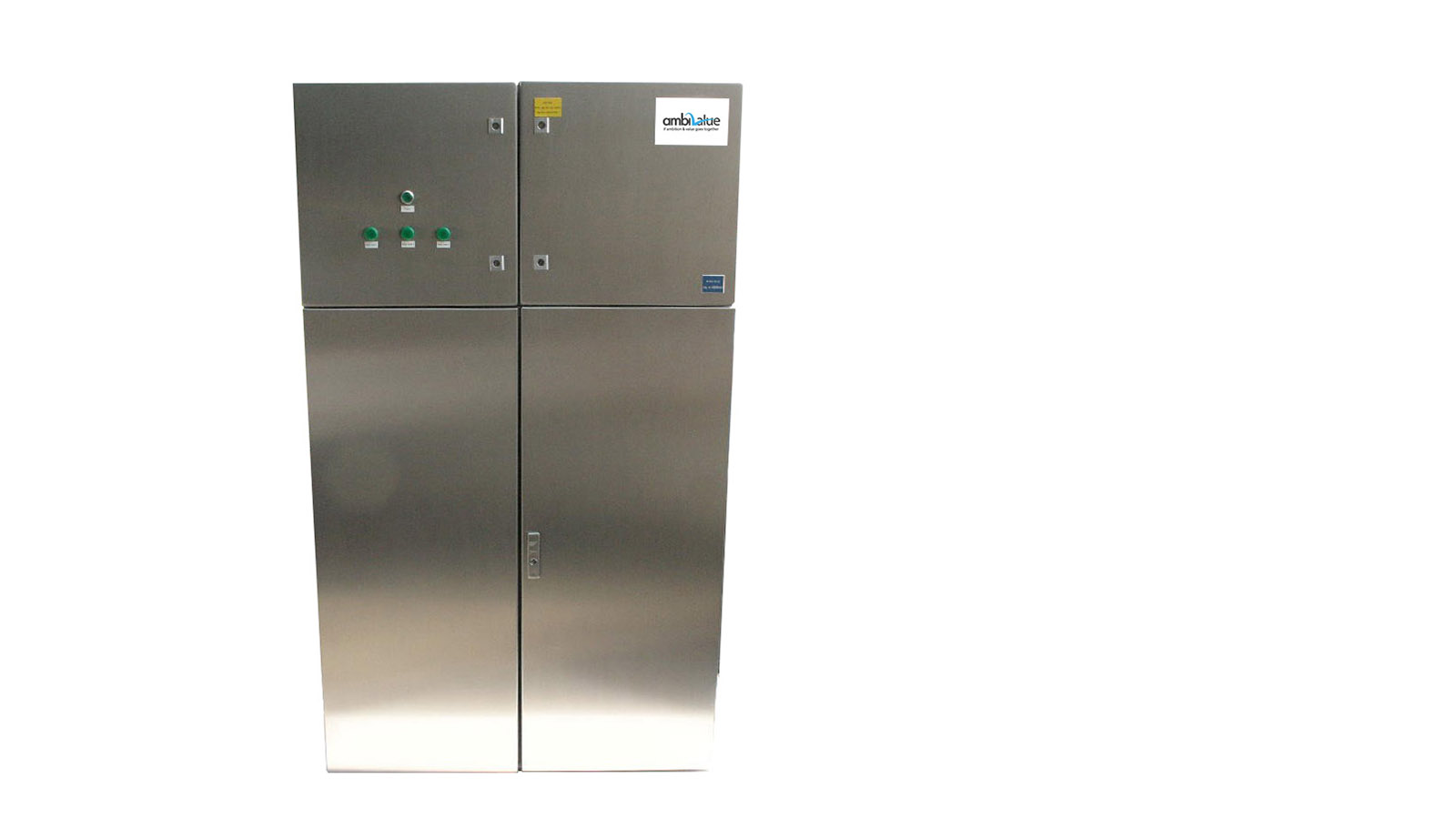EyeTech™ Process
Sampling via a bypass line and high-pressure flowcell to analyze particle size, shape and/or concentration

The EyeTech™ Process analyzer samples from a bypass line and analyze the concentration and particle size of oildroplets and suspended solids in water. The configuration includes, i.e. the EyeTech™ analyzer (Laser & Video channel), special measurement cell, explosion proof housing, sample stream selector (= 3-way switching sample system), data acquisition, 4-20mA outputs, reporting software. Options include: Video Channel and Central Workstation for data collection and remote interfacing of multiple systems.
The Eyetech-Process analyzer belongs to a new generation of Particle Size and Shape Analyzers from Ambivalue. Experience in Particle Size and Shape Analysis has guided Ambivalue in introducing the best particle sizing solutions for a diversified spectrum of applications, such as ‘Process’ application(s).
Principles
Particle Size Analysis (PSA)
The Ambivalue EyeTech™ (‘Process’) analyzer is based on well-founded principles of the Laser-Obscuration-Time (LOT) theory. This is a single particle sizing technique based on the obscuration of a rotation laser beam. The particles in the sample are scanned with a focussed He-Ne laser beam, rotating at a constant speed of 200 Hz using a wedge prism. As the angular velocity is known, the size of each individual particle can be calculated from the duration of the beam obscuration signal. This eliminates the necessity for calibration of detector sensitivity required by other techniques.
Accurate, reliable and with repeatable results, this PSA method measures at 600 discrete size intervals, resulting in a high resolution particle size distribution. The particle size refers solely and directly to particle size, rather than to secondary properties from which size may be inferred. This eliminates inconsistencies due to refractive index, viscosity variations, Brownian motion, thermal convection and other physical phenomena.
From the particle count and the optical volume, a particle concentration can be measured.
The EyeTech™ (‘Process’) analyzer, can discriminate between oil droplets and other solids particles. This can result in accurate size and concentration date on both, the oil droplets size and its distribution.
Dynamic Shape Characterization (DSC)
The DSC is a shape characterization system for particles using in-situ image analysis of the sample. Digital particle images are collected and analysed on a vast range of shape parameters. The Video Microscope synchronized with a strobe light captures 'still' pictures continuously while particles are in dynamic flow. It is not necessary to stop the flow or limit monitoring to stationary objects. Multiple images are enhanced, processed, and analysed automatically to ensure full representation of the sample. Both image and statistical data can be printed or stored for a permanent record of the sample.
Special Features
Speed
With the EyeTech, particle size analysis is fast. The EyeTech™ incorporates an especially fast scanning and rapid analysing mechanism. Low concentration particles can be measured within 30 seconds.
Wide range
PSA (Particle Shape Analysis) covers a wide size range: from 0.2 to 600 microns (µm) by changing only a single lens.
With the Video Microscope, shape measurements on hundreds of thousands of particles from 2 micron to as large as 150 micron can be obtained in minutes. The DSC features high optical quality with a high contrast image that facilitates the definition and measurement of even low contrast objects.
Laser & Laser Resolution
The EyeTech™ system is equipped with a Red-Laser (2 mW HeNe), 632.8 nm and a PIN Photodiode Detector. The achieved resolution is 0.17% full scale or up to 0.2 µm, which of course does depend on the analytical measurement range covered or application/matrix.
Technical Specifications
General
Measured parameters:
EyeTech™ On-line, Laser Channel:
Particle Size Distribution
Oil Droplet Size Distribution
Particle Concentration
Particle Size & Distribution range
Particle Size Analysis (PSA) by laser
Lens A100 : 0.2 – 600 micron
Particle Size & Shape by Image Analysis (= Dynamic Shape Characterization)
Lens CW : 2 -150 micron
or, Lens DW : 10 -600 micron
Concentration range
Range: Typically 0-1500 ppm (depending on application), or up to 109 particles/cc (for 1m particles)
Particle presentation phases
Liquid-borne; airborne; on a surface
Laser
2mW HeNe, 632,8 nm
Detector
Silicon PIN Photo Diode
Resolution
0.17% of full scale, minimum 0.2m
Dynamic range
600:1
Software
The EyeTech™ PSA software requires is Windows 7 or higher. The EyeTech™ PSA suite controls users access, measurement setup, data storage, report generation, data export and hardware diagnostics and is full 21 CFR Part 11 Compliant.
Data Output
All measurement data is stored in an SQL-Database which uses a user configurable report generator to create reports in a Microsoft document, if all needed. The report generator includes all common types of distributions, mean values and statistical data. Measured data is delivered to the PCS (Process Control Station), using 4-20mA signals and volt free contact for channel identification, in case of multi-stream, ‘Process’ analyzer.
Dynamic Shape Charaterization (DSC)
Illumination
Synchronized strobe light with adjustable intensity and duration. Flash rate: 1 – 30 frames/second.
Video Microscope
High Resolution USD 3.0 CMOS Camera
Shape Software
- Image analysis software is integrated into the EyeTech™ PSA software suite.
- Setup and measurement of the Shape Analysis is fully automated by software wizards.
- Automatic analysis of up to millions of particles with up to 1800 non-overlapping particles/frame.
- Computer control of light intensity, duration and light correction
- Automatic image pre-processing (contrast enhancements, histogram equalization etc.)
- Algorithms for rejection of out-of-focus particles.
- Binary noise removal.
- Size and shape grouping algorithms.
- Optional fractal analysis program.
- Incorporation of User-Specified parameters.
- Record and reprocess movie
Images
Additional image material.


